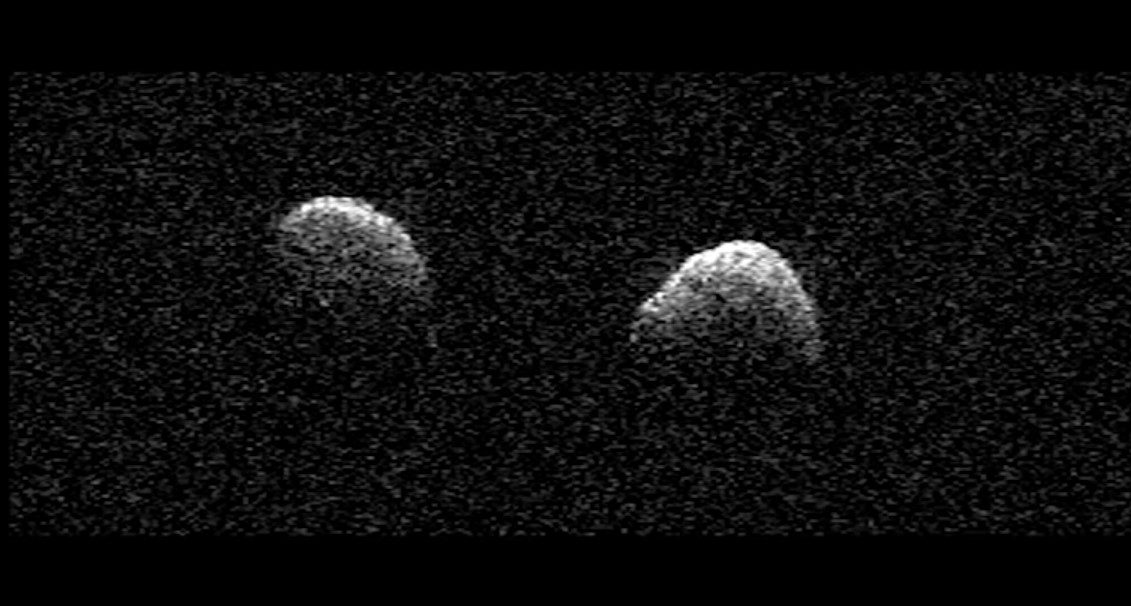An asteroid discovered orbiting the Sun in December last year has revealed a fun surprise:
it's not one asteroid, but two, locked in their own binary orbit around a mutual centre of gravity.The object is called 2017 YE5 (as in "YE5 a surprise second asteroid, hooray!")*, and when it was
first detected on 21 December 2017, it was angled in such a way that astronomers couldn't tell whether it was two objects, or two lobes of the same object joined by a slender waist - like
Comet 67P.
But in late June, the asteroids were coming in on the closest point to Earth in their
elliptical path around the Sun - a distance of about 6 million kilometres (3.7 million miles) from Earth; it was an observation opportunity too good to pass up.
So between June 21 and June 26, scientists at Arecibo Observatory in Puerto Rico and the Green Bank Observatory in West Virginia teamed up for some astronomy magic. Arecibo transmitted a radar signal to the asteroid, which bounced off the object to be received by Green Bank in a technique called
bistatic radar.
Both observatories also observed 2017 YE5 independently, determining the gap between the objects.
The two asteroids perform one full orbit of each other every 20 to 24 hours or so.Optical observations measuring the brightness of the binary asteroid confirmed the finding.
Astronomers estimate that
roughly 15 percent of all near-Earth asteroids larger than 200 metres (650 feet) across are binaries; however, they usually consist of one smaller and one larger asteroid.
Some - much more rarely - are even triple, like Asteroid Florence, which flew by Earth in August and September of last year,
accompanied by two little moons of its own.
But 2017 YE5 is special. Each of the two objects measures around 900 metres (3,000 feet) across - meaning
they're roughly around the same size.This size is also larger than the initial brightness observations suggested, which means the pair is not very reflective at all - probably roughly as black as charcoal.
They also displayed a curious feature. Each of the two objects reflects the radar signal differently. This means there's probably a difference in their densities, surface composition, surface roughness, or a combination of these factors.It could mean that the two parts were initially separate objects that were drawn into a mutual orbit when they got close to one another as they were zipping around the Solar System.
Finding out more about this amazing object will require more analysis, but future observations are eminently possible. 2017 YE5 takes just 1,730 days to orbit the Sun, or 4.74 years. By the time it comes around again - the blink of an eye in space terms - we may even have more advanced tech that can obtain higher-resolution data.
Meanwhile, the data obtained in the recent observation will be analysed to try and find out more about the densities of the 2017 YE5 objects, which may shed light on their internal structure and composition.
*No, not really, we made that bit up.

Comment: Binary objects, like stars, are actually a relatively common feature in the universe: